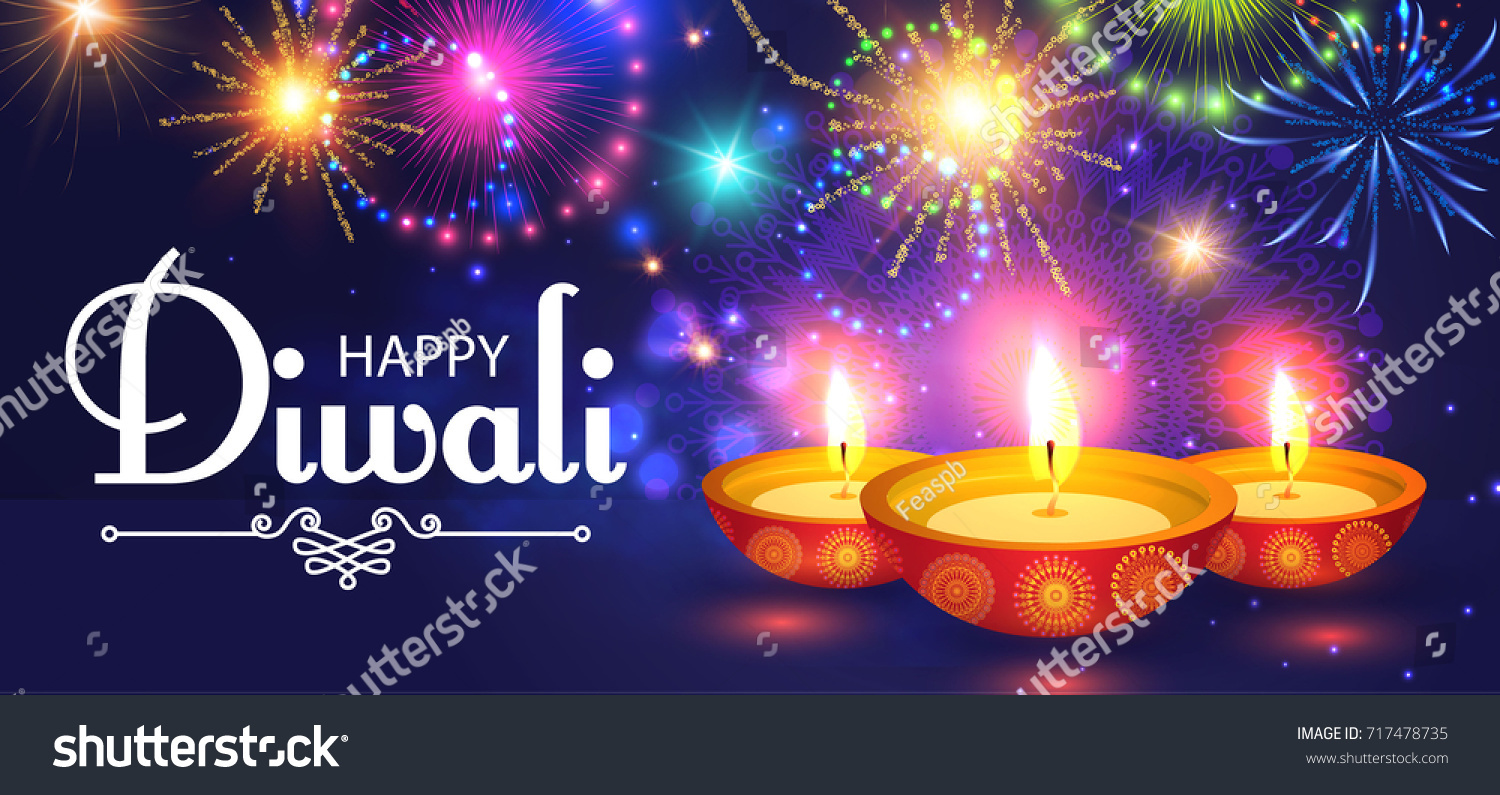Diwali festival
 Deepavali is the Hindu festival of lights, usually lasting five days and celebrated during the Hindu Lunisolar month Kartika (between mid-October and mid-November).One of the most popular festivals of Hinduism, Diwali symbolizes the spiritual "victory of light over darkness, good over evil, and knowledge over ignorance".The festival is widely associated with Lakshmi, godde6ss of prosperity, but regional traditions connect it to Sita and Rama, Vishnu, Krishna, Durga, Kali, Dhanvantari, or Vishvakarman.
Deepavali is the Hindu festival of lights, usually lasting five days and celebrated during the Hindu Lunisolar month Kartika (between mid-October and mid-November).One of the most popular festivals of Hinduism, Diwali symbolizes the spiritual "victory of light over darkness, good over evil, and knowledge over ignorance".The festival is widely associated with Lakshmi, godde6ss of prosperity, but regional traditions connect it to Sita and Rama, Vishnu, Krishna, Durga, Kali, Dhanvantari, or Vishvakarman.In the lead-up to Diwali, celebrants will prepare by cleaning, renovating, and decorating their homes and workplaces.During the Diwali people wear their finest clothes, illuminate the interior and exterior of their homes with diyas (oil lamps or candles), offer puja (worship) to Lakshmi, the goddess of prosperity and wealth,[note 1] light fireworks, and partake in family feasts, where mithai (sweets) and gifts are shared. Diwali is also a major cultural event for the Hindu and Jain diaspora from the Indian subcontinent.
King Harsha refers to Deepavali, in the 7th century Sanskrit play Nagananda, as Dīpapratipadotsava (dīpa = light, pratipadā = first day, utsava = festival), where lamps were lit and newly engaged brides and grooms received gifts. Rajasekhara referred to Deepavali as Dipamalika in his 9th century Kavyamimamsa, wherein he mentions the tradition of homes being whitewashed and oil lamps decorated homes, streets and markets in the night.
Islamic historians of the Delhi Sultanate and the Mughal Empire era also mentioned Diwali and other Hindu festivals. A few, notably the Mughal emperor Akbar, welcomed and participated in the festivities, whereas others banned such festivals as Diwali and Holi,
 Publications from the British colonial era also made mention of Diwali, such as the note on Hindu festivals published in 1799 by Sir William Jones, a philologist known for his early observations on Sanskrit and Indo-European languages. In his paper on The Lunar Year of the Hindus, Jones, then based in Bengal, noted four of the five days of Diwali in the autumn months of Aswina-Cartica [sic] as the following: Bhutachaturdasi Yamaterpanam (2nd day), Lacshmipuja dipanwita (the day of Diwali), Dyuta pratipat Belipuja (4th day), and Bhratri dwitiya (5th day). The Lacshmipuja dipanwita, remarked Jones, was a "great festival at night, in honor of Lakshmi, with illuminations on trees and houses"Diwali is a five-day festival, the height of which is celebrated on the third day coinciding with the darkest night of the lunar month. During the festival, Hindus, Jains and Sikhs illuminate their homes, temples and work spaces with diyas, candles and lanterns Hindus, in particular, have a ritual oil bath at dawn on each day of the festival.[Diwali is also marked with fireworks and the decoration of floors with rangoli designs. Food is a major focus with families partaking in feasts and sharing mithai.[The festival is an annual homecoming and bonding period not only for families,[but also for communities and associations, particularly those in urban areas, which will organise activities, events and gatherings.[Many towns organise community parades and fairs with parades or music and dance performances in parks.[Some Hindus, Jains and Sikhs will send Diwali greeting cards to family near and far during the festive season, occasionally with boxes of Indian confectionery
Publications from the British colonial era also made mention of Diwali, such as the note on Hindu festivals published in 1799 by Sir William Jones, a philologist known for his early observations on Sanskrit and Indo-European languages. In his paper on The Lunar Year of the Hindus, Jones, then based in Bengal, noted four of the five days of Diwali in the autumn months of Aswina-Cartica [sic] as the following: Bhutachaturdasi Yamaterpanam (2nd day), Lacshmipuja dipanwita (the day of Diwali), Dyuta pratipat Belipuja (4th day), and Bhratri dwitiya (5th day). The Lacshmipuja dipanwita, remarked Jones, was a "great festival at night, in honor of Lakshmi, with illuminations on trees and houses"Diwali is a five-day festival, the height of which is celebrated on the third day coinciding with the darkest night of the lunar month. During the festival, Hindus, Jains and Sikhs illuminate their homes, temples and work spaces with diyas, candles and lanterns Hindus, in particular, have a ritual oil bath at dawn on each day of the festival.[Diwali is also marked with fireworks and the decoration of floors with rangoli designs. Food is a major focus with families partaking in feasts and sharing mithai.[The festival is an annual homecoming and bonding period not only for families,[but also for communities and associations, particularly those in urban areas, which will organise activities, events and gatherings.[Many towns organise community parades and fairs with parades or music and dance performances in parks.[Some Hindus, Jains and Sikhs will send Diwali greeting cards to family near and far during the festive season, occasionally with boxes of Indian confectionery.Diwali festival
非常不错的节庆介绍。谢谢分享。
ReplyDeleteबहुत अच्छा, एक प्यारा त्योहार है।
ReplyDelete